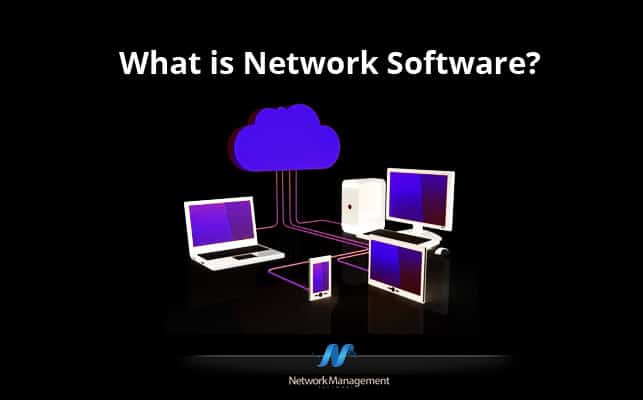Picture a robot, created to perform certain functions such as bringing you hot tea on a cold day. This robot performs many functions on the outside, but even more functions on the inside.
Much like the robot, network software facilitates the functions that enable your network to do its daily tasks. From security to maintenance and beyond, network software is the best way to innovate and adapt your network to the ever-changing tech world.
Although the topic can seem a bit techy and overwhelming, don’t fall asleep just yet. The basics of network software and what makes it tick are quite simple.
Let’s discuss the history of network software, types and of course the benefits. Time to send the robot for some popcorn.
Networking vs. Network Software
Hold up…
First, things first, let’s make sure we understand the difference between networking vs. network software. Networking can be defined simply as the way computers and other devices speak to one another.
All the devices connect to one huge network of communication across the globe. For businesses, a network can be comprised of all business computers and devices on the business network. A network is a network, no matter how small.
Network software can be used to monitor, change and interact with this network. For example, a company may have a vast number of computers all on the same network.
Their IT department will use network software to monitor security on these devices, all from one place. Different types of software are available to help facilitate different tasks for your network such as maintenance, data gathering and even accounting.
A Brief History of Networking
The network in its simplest form can be connected to the 1940s, thanks to Mr. George Stibitz, who used a Teletype machine to send instructions for his problem from his Model at Dartmouth College, to his Complex Number Calculator in New York.
And he received results back the same way. In the 1950s, the military radar system was an early version of computer networking. And in the 1960s, the commercial airline reservation took it online using two connected mainframes. More advancements eventually lead to the creation of Home Broadband in 1991, leading to the creation of the 56K modem by Dr. Brent Townshend in 1996.
From there, we have grown to expect the 100 Terabit Ethernet by the year 2020. With this growth, new network software is created each year to help users facilitate tasks that the network requires. You could say that our network abilities escalated quickly.
Types of Network Software
In the world of network software, the term is very broad.
There are many different types of network software a network can use. Let’s discuss some of the categories in more detail.
• Setup and Installation
This type of network software allows the user to setup and install certain programs and devices to the entire network. This software can allow the user to install programs remotely to other computers.
• Security monitoring
The type of software allows users and IT departments to monitor the security of a network remotely. It gives access to the network so potential security holes are patched and breaches are stopped in their tracks.
• Productivity
Some software is available to create productivity in the network. The software enables the user to visualize the network operations and make changes efficiently to save time on the back end.
• Network virtualization
Perhaps one of the newest forms of software, network virtualization allows virtual networks to take the place of legacy systems that are built on physical hardware setups. A virtual network boasts a higher level of security and functionality for users.
There are literally hundreds of different options available for network software, depending on the needs of the user. A company may require software to create virtual networks for remote employees.
Or, a security team may use software to manage the security of their client’s networks. Whatever the case, there is a solution for every need.
The Benefits
There are many benefits to using network software, especially with new technology on the horizon such as the use of big data and virtualization.
These benefits include:
• Centralization
Software-defined networks provide one centralized view of the entire network from one location.
This helps the user or users to manage and make provisions all in one place.
• Security
Security is also centralized into one location, making it easier to manage devices coming on and off the network.
• Cost Savings
Because of the virtualization and the efficiency it creates, operational costs should be lower than traditional networking methods.
• Easier content Delivery
Users who stream data or content can do so quicker and easier using network software.
This software improves the network’s responsiveness to create a better experience on both ends.
Conclusion
Networking and network software should go hand in hand, especially in this age of digital transformation.
To remain secure, to work with a higher level of productivity and ultimately stay competitive, network software can make all the difference.
Network Software FAQs
What are some considerations when selecting network software?
Some considerations when selecting network software include compatibility with existing network infrastructure and hardware, ease of use and administration, feature set and functionality, support and documentation, and pricing and licensing.
Can network software be customized?
Many network software applications can be customized to meet specific business needs and requirements. This may involve modifying the application's configuration settings, creating custom scripts or workflows, or integrating the application with other applications.
How do I troubleshoot issues with network software?
The process for troubleshooting issues with network software can vary depending on the software and the nature of the problem. In general, troubleshooting may involve reviewing log files, checking configuration settings, testing the software in a different environment, or contacting the vendor's support team.

